|
LEAVING CHELTENHAM …………..and all that was dear |
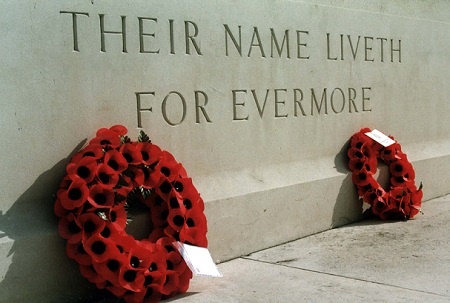
|
Too Late The Hero |
|
As far as the UK was concerned the Great War was officially ended on 31st August 1921. From 4th August 1914, and up to and including 31st August 1921, all servicemen of the British Empire whose death was attributable to war service were treated as an official war casualty which attracted certain entitlements as authorised by the War Office through the Commonwealth War Graves Commission. These entitlements included an official headstone where the grave was known or the casualty’s name to be inscribed on a Memorial To The Missing in the area where the body was not found or officially identified after the war.
After 31st August 1921, those who died of wounds or illness caused by service in the war were no longer officially recognised as war casualties. Many from Cheltenham who fought in the Great War and succumbed to attributable wounds and illness after the “cut-off” date were therefore never officially recognised as war casualties. This is a tribute to these men. |
|
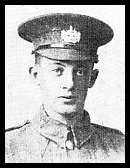 |
Pte Arthur Sidney Victor Bridges, No. 28126, Gloucestershire Regiment, died of illness on 4th June 1925. The “Gloucestershire Graphic and Cheltenham Chronicle” published on 13th June 1925, reported that his death was due to haemorrhage resulting from malaria contracted during the war.
He was 28 and left a widow and baby daughter residing at 3, Beaufort Place, Cheltenham. He had previously served with 9th Battalion Gloucestershire Regiment in Salonica. |
|
Pte William Douglas Clark, R/37001, Kings Royal Rifle Corps, died on 10th March 1922, aged 24.
His death was reported in “The Graphic” on 13th February 1922 which stated that he never really recovered from the privations suffered as a prisoner of war in Germany for nine months.
He was a student of Wycliffe College and is commemorated in the College Roll of Honour.
His father, Thomas Clark, resided at “Plas Newydd” Painswick Road, Cheltenham.
|
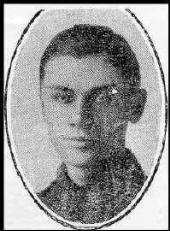 |
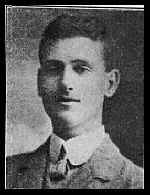 |
Cpl Percival Harry Clee, 10/866, Wellington Infantry Regiment, New Zealand Expeditionary Force died on 16th June 1923, aged 31.
His death was reported in “The Graphic” on 18th August 1923 which stated that he died in New Zealand from the result of war service.
His mother resided at Saxony House, Pitville, Cheltenham. His brother, Cpl Douglas Clee, RAF, died in Brentwood on 3rd February 1919, and has only fairly recently (2007) been accepted as a War Casualty.
The brothers are commemorated on the grave of a relative in Cheltenham Cemetery.
|
|
Pte Walter William Copestake, 3145, Gloucestershire Regiment, died on 9th April 1922, aged 23.
His death was reported in “The Graphic” on 29th April 1922 which stated that he died of meningitis in Cheltenham General Hospital, following injuries he received in the war.
His parents and siblings resided at 29 Columbia Street, Cheltenham.
|
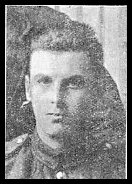 |
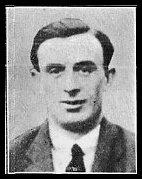 |
LCpl James Crumpton, 200201, Worcestershire Regiment, died on 20th December 1923, aged 29.
His death was reported in “The Graphic” on 29th December 1923, which stated that he was severely wounded in the war, and had become familiar in his cycle chair in Cheltenham area.
He resided at St Martin’s Home, Cheltenham.
|
|
Pte Henry John Godsell, DCM, 199th Battalion Canadian Infantry, died in Canada on 11th January 1923, aged 38.
His death was reported in “The Graphic” dated 10th February 1923 which stated that he died after a long illness contracted in the war.
He left a widow at 304 Adams Street, Maisonneuve, Montreal, Canada and his parents, Mr and Mrs Albert Charles Godsell resided at “Ainstable” Imperial Square, Cheltenham.
He is commemorated on his parent’s grave in Cheltenham Cemetery.
|
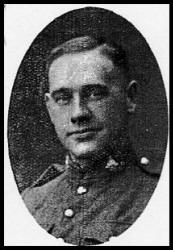 |
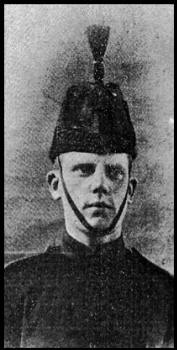 |
Pte Alfred Edwin Jakeway, 10830, Kings Royal Rifle Corps, was wounded in action on 14th September 1914 during the Battle of the Aisne. His death, on 24th January 1923, was reported in “The Graphic” of 3rd February 1923 which stated that he was one of the first Cheltonians to be wounded and had suffered for eight years.
His burial service was reported in “The Echo” of 29th January 1923. The article remarked that “Pte Jakeway had died of the after effects of his wounds, which in the meantime had necessitated over twenty operations.” He is buried in Cheltenham Cemetery (Plot E-950).
He left a widow, Florrie, of Roath Cottage, Swindon Road, Cheltenham and his parents, Mr and Mrs Frank Jakeway, resided at 1 Devonshire Street, Cheltenham.
His brother, Pte Frank Jakeway, 7th Battalion Gloucestershire Regiment, was killed in action on 12th August 1915 in Gallipoli.
|
|
Pte William Large, Princess Patricia’s Canadian Light Infantry, died in Canada on 23rd October 1921, aged 36. His death was reported in “The Graphic” which stated that he died from illness contracted on Active Service. He was discharged from the Canadian Army, through sickness, on 10th August 1918.
His parents resided at Bushcombe Lane, Woodmancote, near Cheltenham and his brother, Pte George Frederick Large, PPCLI, was killed in action at Passchendaele on 30th October 1917.
The brothers are commemorated on their parents grave in Bishops Cleeve (St Michael’s) Churchyard and are both listed on the Bishops Cleeve War Memorial.
|
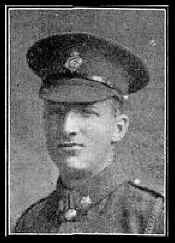 |
| |
Captain Thomas Robinson Trotter, died on 24th April 1927 in the Imperial Nursing Home, Cheltenham, aged 50.
His death was reported in “The Graphic” published on 27th April 1927, which stated that he died from the effects of being gassed in France during the Great War.
He served in the Gloucestershire Regiment and the Tank Corps.
He left a widow and a son residing at “Korosko”, Leckhampton Road, Cheltenham.
|
|
Private Frederick George Gibbons died of illness in Cheltenham on 18th January 1922, aged 27. |
A photograph of |
Page last updated: 7th July 2018
|Home Page | Area Covered| War Memorials | Rollof Honour | Uncommemorated | Cemeteries| Investigations | Observations|
|Commemorations | Images| Facts and Figures | VictoriaCrosses | The Book | MemorialScroll | Links | Acknowledgements|
|Latest News | Timeline| VAD Hospitals | SiteMap |